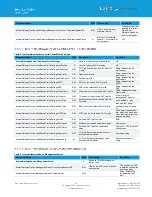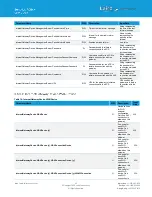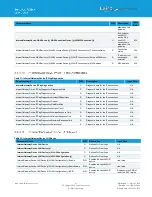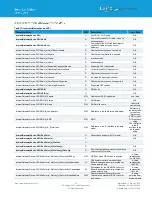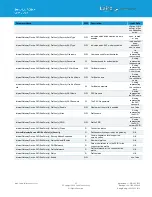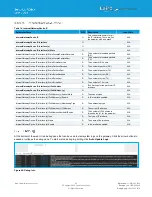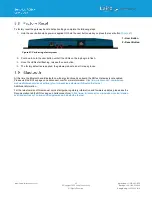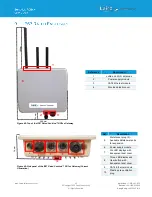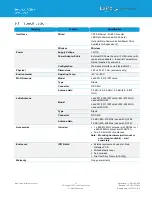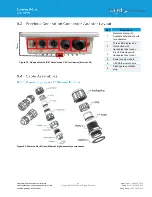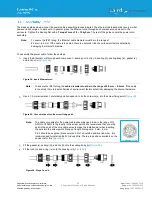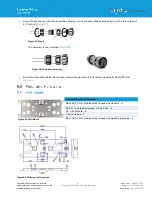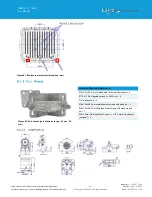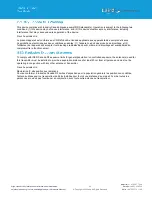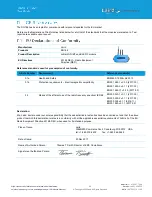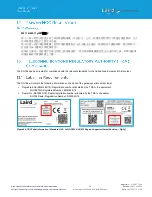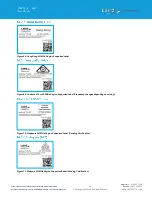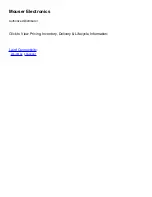
https://connectivity.lairdtech.com/wireless-modules/lorawan-
solutions/sentrius-rg1xx-lora-enabled-gateway-wi-fi-bluetooth-ethernet
53
© Copyright 2020 Laird. All Rights Reserved
America:
+1 919 597 7300
Europe:
+46 31 420530
Asia:
+86 755 2714 1166
Figure 63: Pole mount dimensions
This product contains the RG191-M2 and the WB50NBT from Laird.
Model
US/FCC
CANADA/IC
RG191-M2
WB50NBT
SQG-1001
SQG-WB50NBT
3147A-1001
3147A-WB50NBT
To comply with FCC RF exposure limits for general population/uncontrolled exposure, the antenna(s) used for this
transmitter must be installed to provide a separation distance of at least 20 cm from all persons and operating in
conjunction with any other antenna or transmitter.
IMPORTANT NOTE:
If these conditions cannot be met (for certain configurations or co-location with another transmitter),
then the FCC and Industry Canada authorizations are no longer considered valid and the FCC ID
and IC Certification Number cannot be used on the final product. In these circumstances, the OEM
integrator is responsible for re-evaluating the end product (including the transmitter) and obtaining a
separate FCC and Industry Canada authorization.
To comply with FCC and Industry Canada RF exposure limits for general population/uncontrolled exposure, the antenna(s)
used for this transmitter must be installed to provide a separation distance of at least 20 cm from all persons and operating
in conjunction with any other antenna or transmitter, except in accordance with FCC multi-transmitter product procedures.
WARNING
:
Changes or modifications not expressly approved by Laird could void the user’s authority to operate
the equipment.
This equipment has been tested and found to comply with the limits for a Class B digital device, pursuant to Part 15 of the
FCC Rules. These limits are designed to provide reasonable protection against harmful interference in a residential
installation. This equipment generates, uses, and can radiate radio frequency energy and, if not installed and used in
accordance with the instructions, may cause harmful interference to radio communications. However, there is no guarantee
that interference will not occur in an installation. If this equipment does cause harmful interference to radio or television
reception, which can be determined by turning the equipment off and on, the user is encouraged to correct the interference
by one or more of the following measures:
▪
Re-orient or relocate the receiving antenna
▪
Increase the separation between the equipment and the receiver
▪
Connect the equipment to an outlet on a circuit different from that to which the receiver is connected.
▪
Consult the dealer or an experienced radio/TV technician for help.
This device complies with part 15 of the FCC rules operation is subject to the following two conditions: (1) this device may
not cause harmful interference, and (2) this device must accept any interference received, including interference that may
cause undesired operation.
Summary of Contents for 450-0190
Page 1: ...Version 4 1 ...

